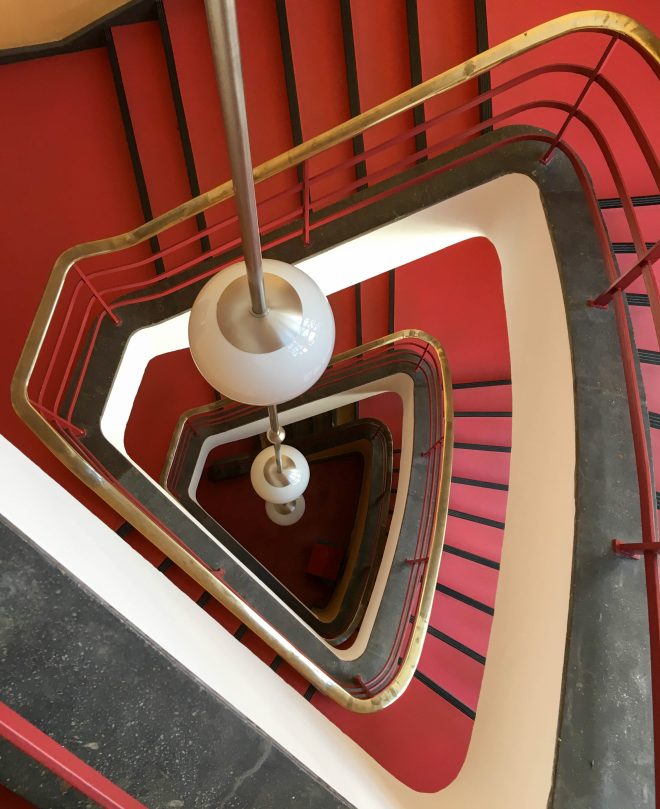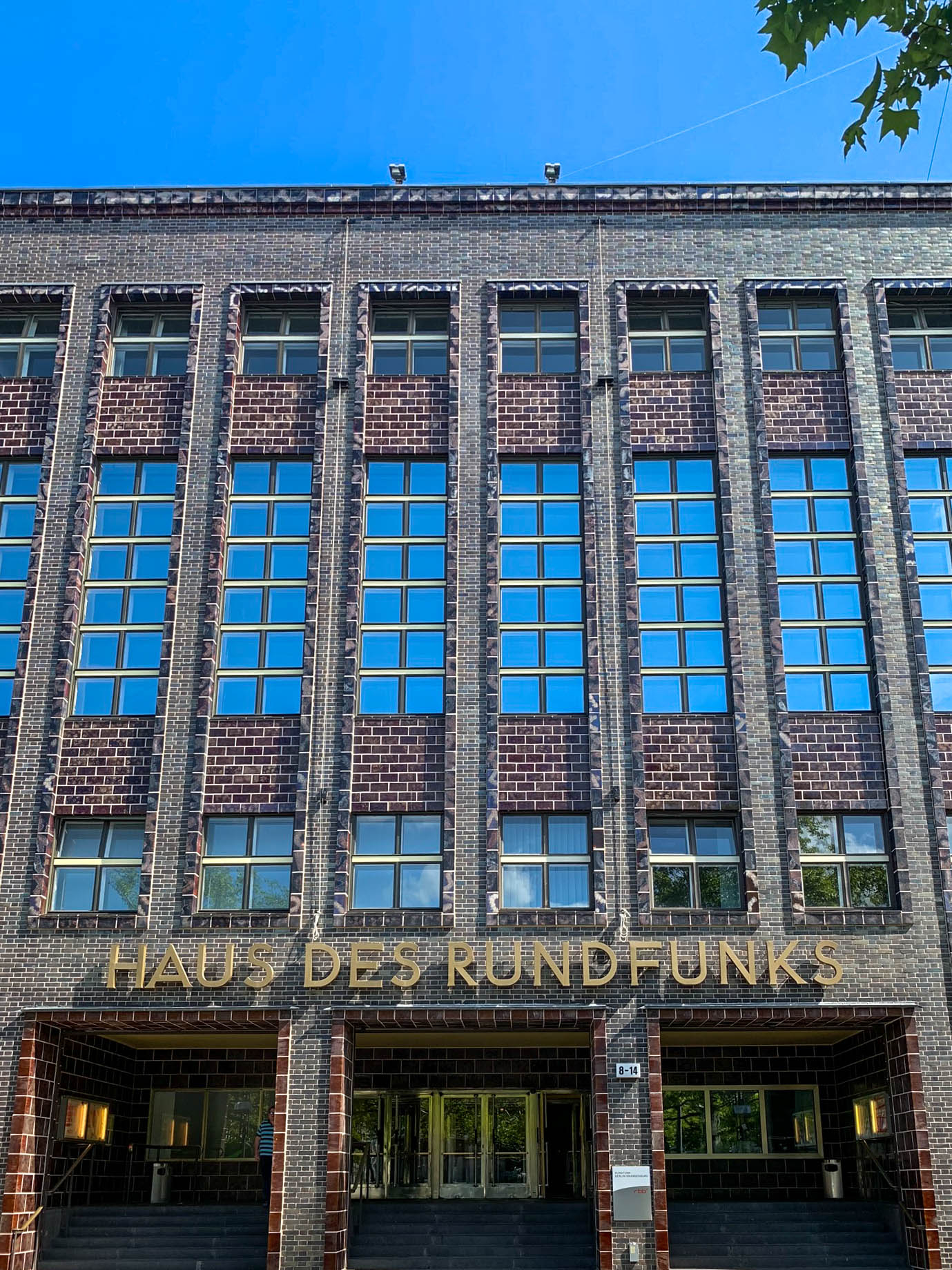
Haus des Rundfunks, 1929-1931. Architect: Hans Poelzig. Photo: Daniela Christmann
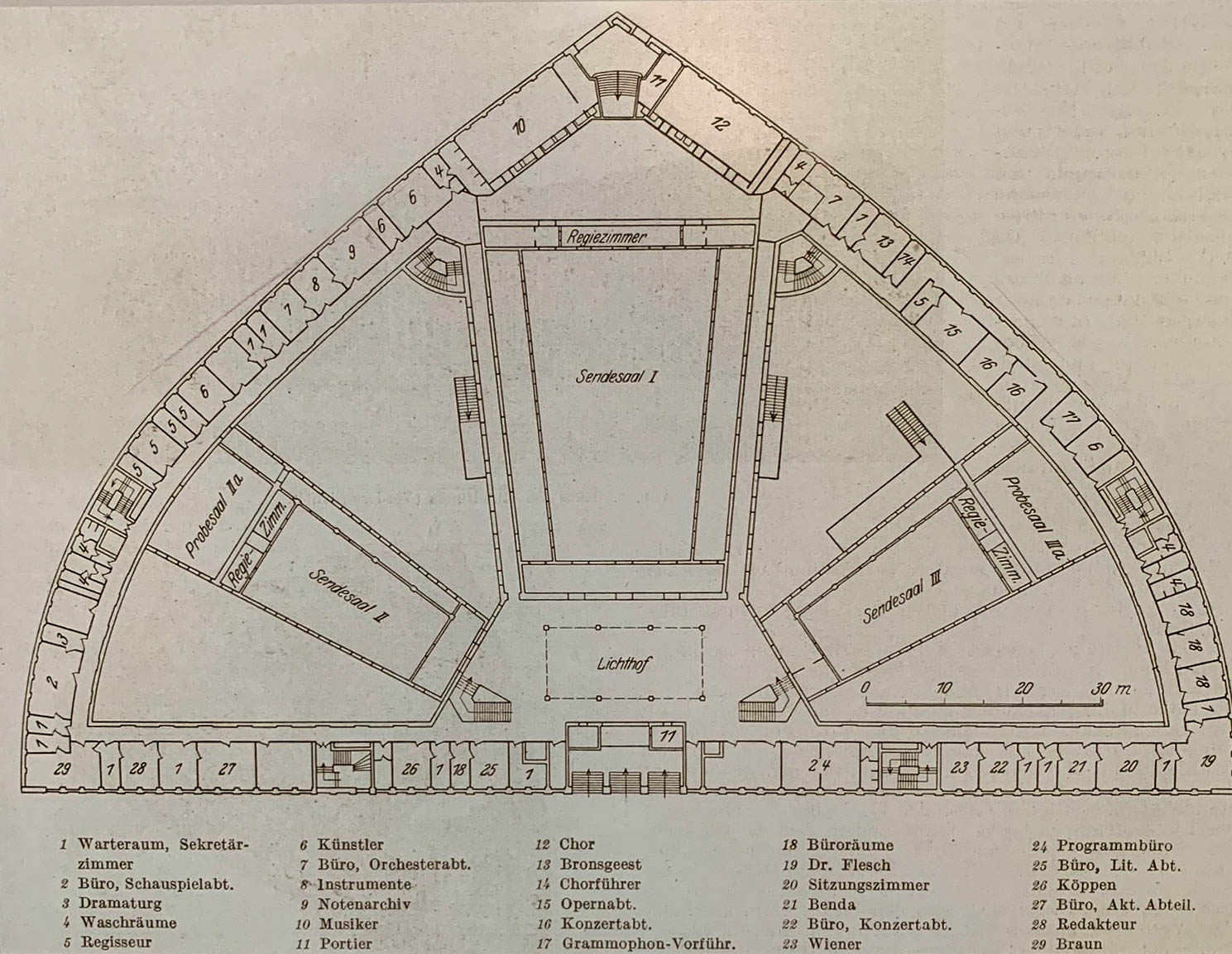
Haus des Rundfunks, 1929-1931. Architect: Hans Poelzig. Photo: Daniela Christmann
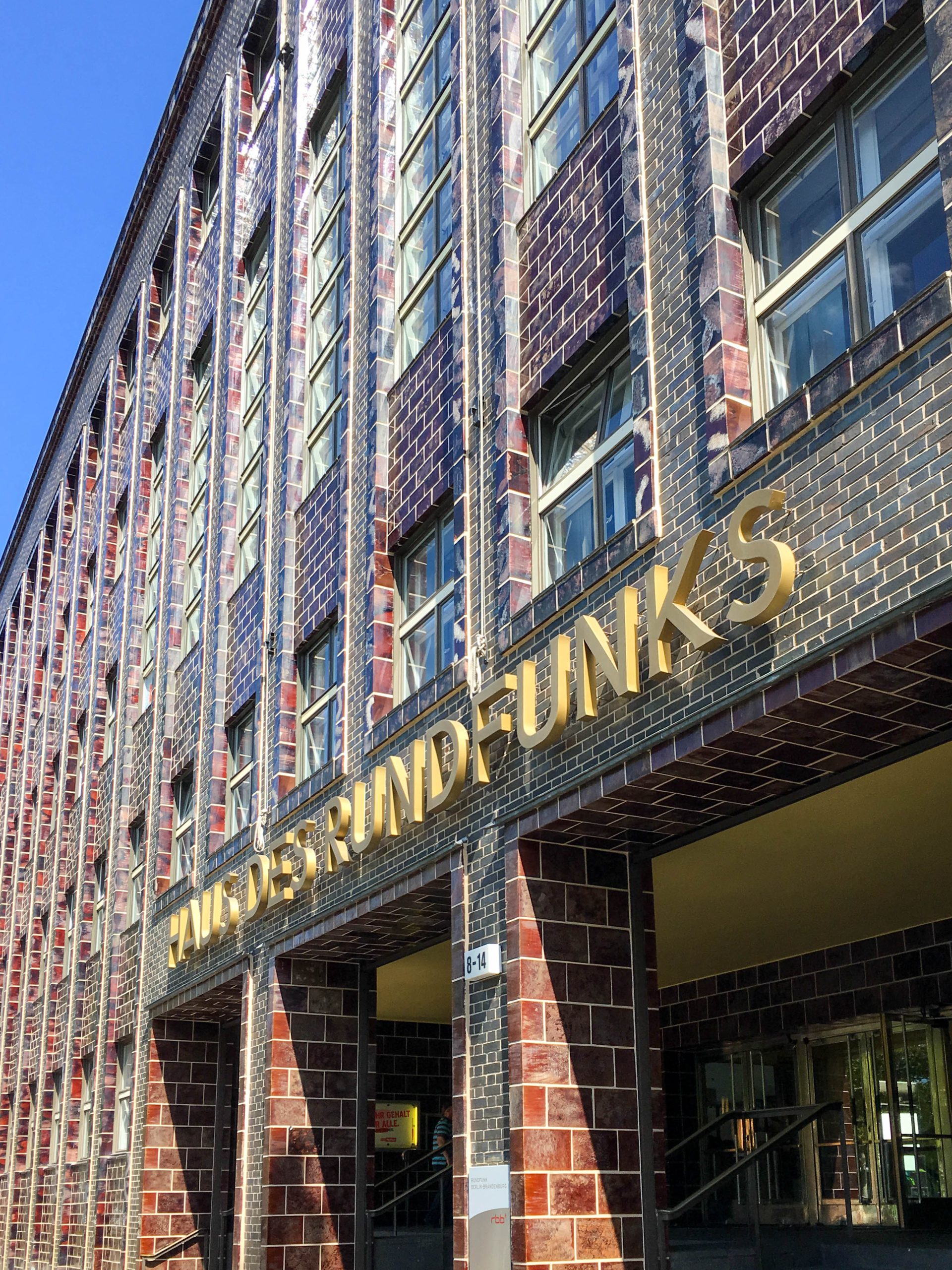
Haus des Rundfunks, 1929-1931. Architect: Hans Poelzig. Photo: Daniela Christmann
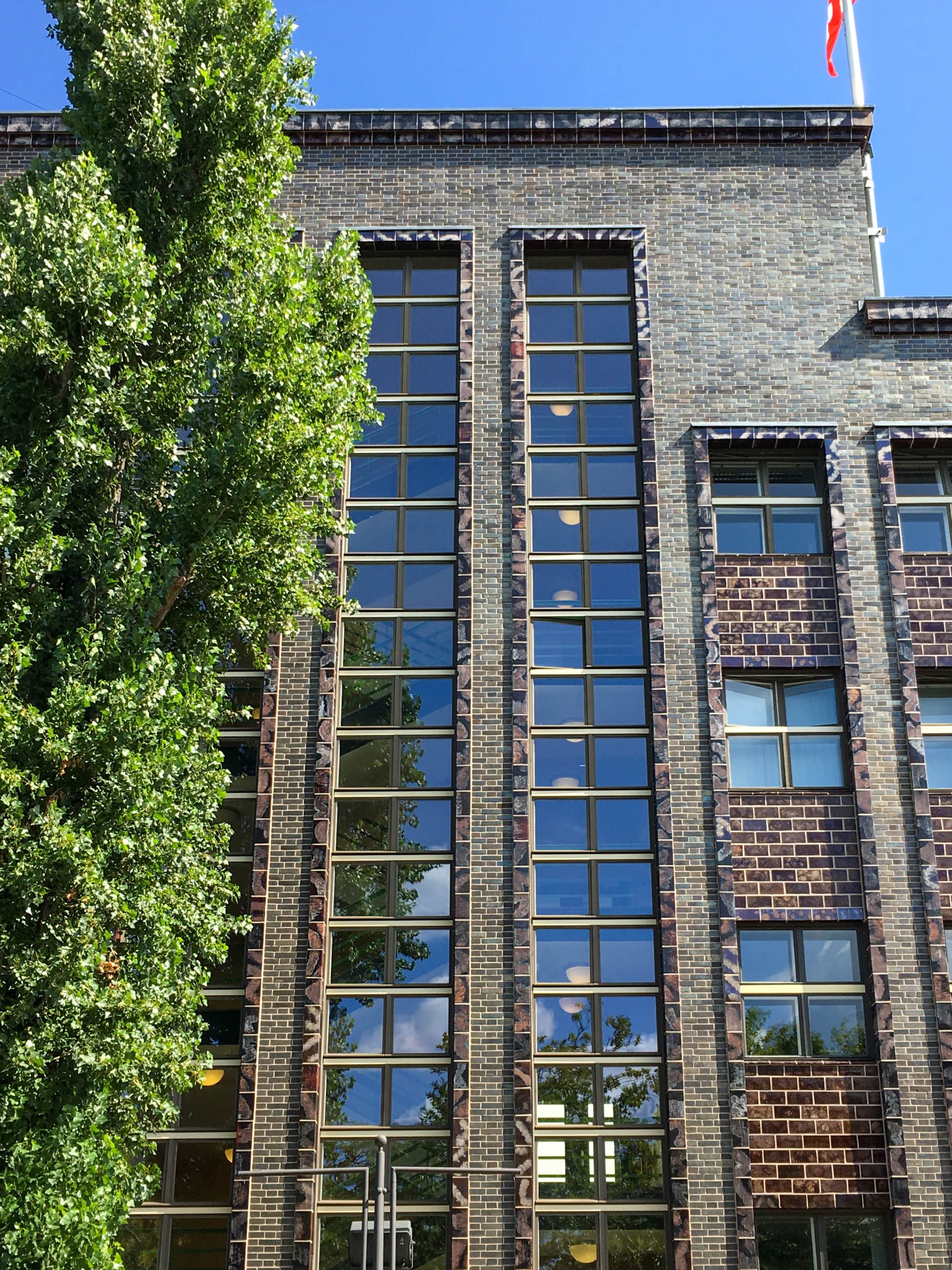
Haus des Rundfunks, 1929-1931. Architect: Hans Poelzig. Photo: Daniela Christmann
1929 – 1931
Architect: Hans Poelzig
Masurenallee 8-14, Berlin, Germany
The Haus des Rundfunks (Broadcasting House) built in Berlin from 1929 to 1931 to plans by Hans Poelzig, was one of the first broadcasting buildings in Europe.
Prior to that, the Munich Radio House had been built from 1928 to 1929 according to plans by Richard Riemerschmid.
Competition
As early as 1927, Poelzig had been commissioned by the Reichs-Rundfunk-Gesellschaft (RRG) to design a new broadcasting building.
Poelzig initially rejected the commission and proposed a competition instead.
The broadcasting company followed his suggestion and announced a closed competition to which, in addition to Poelzig, the office of Paul Bonatz & Friedrich Scholer and the architect Richard Riemerschmid were invited.
The specifications for the competition included two large broadcasting rooms, several small recording studios, rehearsal rooms, dressing rooms, technical rooms and offices on a total of no more than three floors.
A main entrance to the building was to be located on Masurenallee.
The property length on Masurenallee was about 200 meters, and the building site was about 18,000 square meters in total.
To the south of the street was the radio tower and Heinrich Straumer‘s radio hall.
Directly opposite the building site was the exhibition center, which was still under construction.
Poelzig won the competition and was awarded the contract for the new radio building in April 1929.
Building
The Haus des Rundfunks, with the ground plan of a triangle rounded off on two sides, was built between 1929 and 1931 under the construction supervision of Poelzig’s collaborator Max Henry Berling.
Kurt Liebknecht was responsible for the interior design.
In May 1929, the foundation stone was laid, and the building was officially opened in January 1931.
From then on, Funk-Stunde Berlin, Deutsche Welle GmbH and the Reichs-Rundfunk-Gesellschaft broadcast from the Haus des Rundfunks.
The offices and editorial offices are located on the outside of the building and surround the three large studio complexes inside, which are largely shielded from street noise.
Within the office and editorial wing, only the exterior walls are load-bearing. Depending on the needs of the room size, the partition walls can be variably removed and installed.
Construction
Since changes occur frequently in the composition of the editorial offices and partition walls are moved, the exact number of rooms varies constantly.
An impressive feature is the five-story main front, whose middle 32 axes are raised by one floor.
Vertical window strips are clad in reddish-brown ceramic tiles jut out from the black clinkered wall surfaces.
Two wings swing convexly backward from the ends of the 150-meter-long main front on Masurenallee, forming an obtuse triangle.
Interior
At the center are three trapezoidal broadcast halls that radiate from the large atrium behind the main front, forming four inner courtyards.
The large atrium is the distribution space of the whole building.
All corridors leave from here, all transmission rooms as well as the various connection possibilities to the higher floors.
Eight pillars, arranged in a rectangle, divide the foyer in the center.
They support a five-storey gallery, which extends to the highest point of the building.
Glazed ceramic slips encase them. The balustrades of the galleries are made of yellow hollow bricks that show a grid consisting of regular sequences of rectangular holes.
The top row only, the handrail, is made in horizontal flat black bricks.
Daylight streams through the skylight of opaque glass panels.
Originally designed by Marlene Moeschke-Poelzig, the lamps are now a reconstruction from 1987.
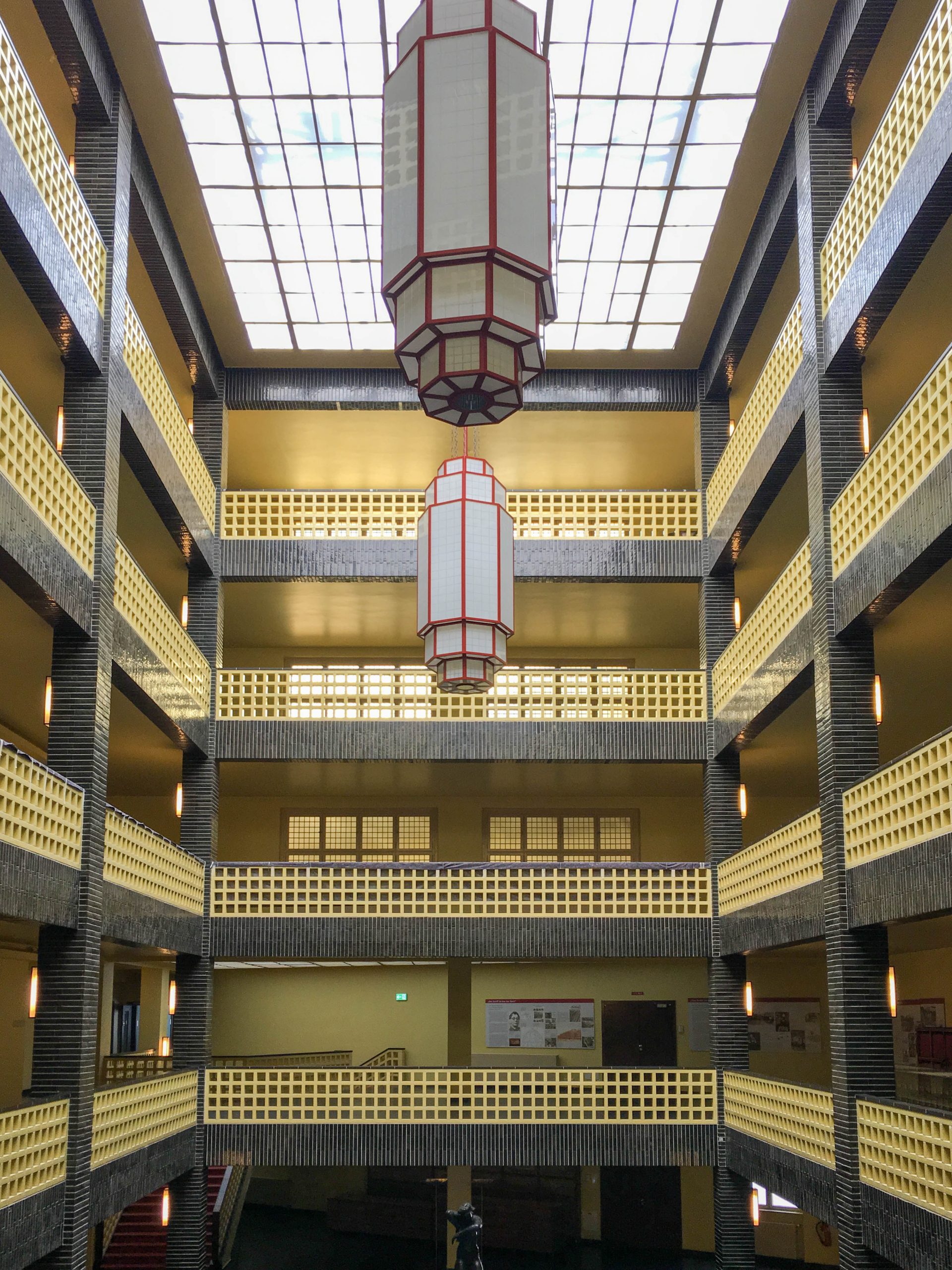
Haus des Rundfunks, 1929-1931. Architect: Hans Poelzig. Photo: Daniela Christmann
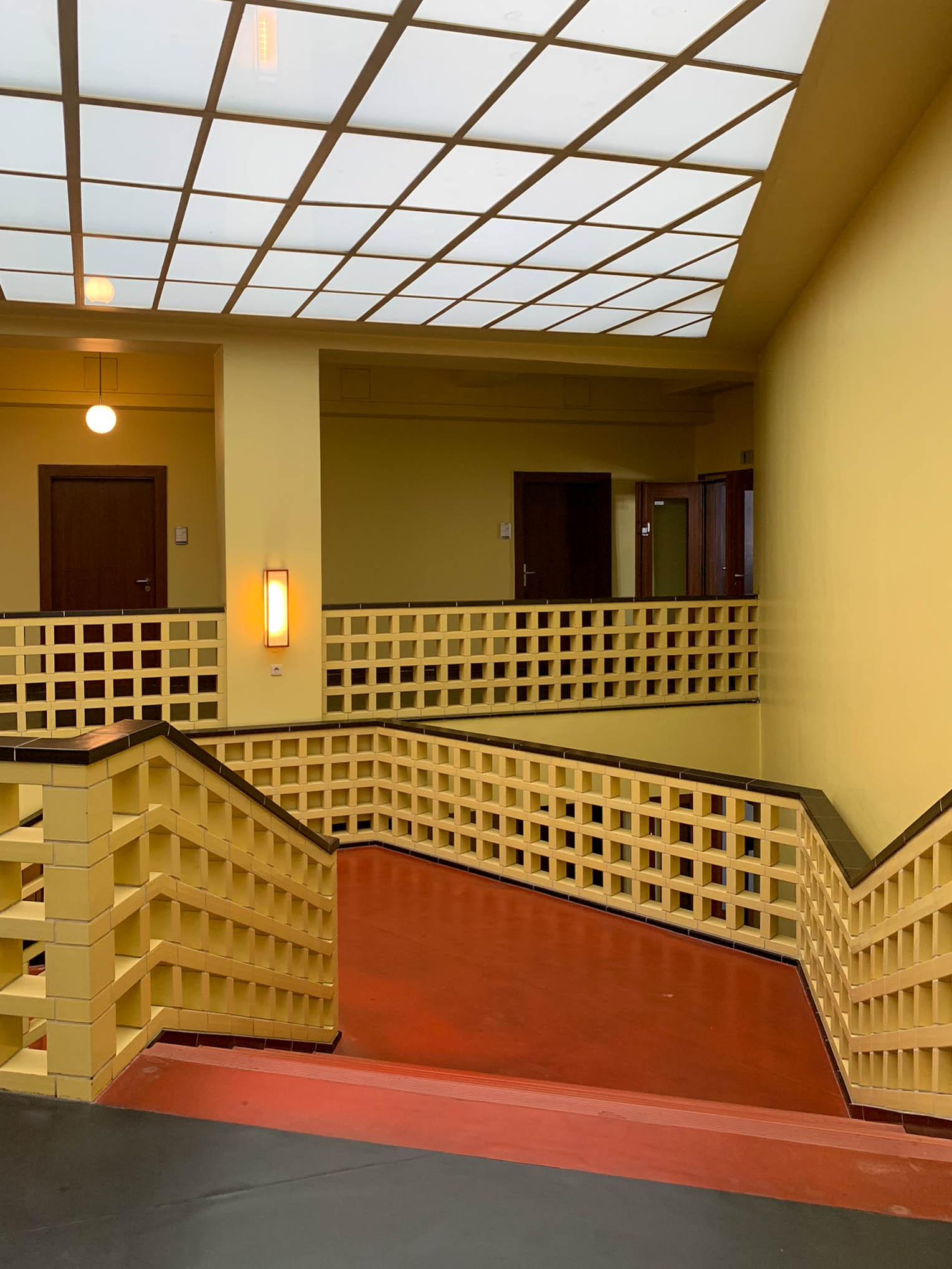
Haus des Rundfunks, 1929-1931. Architect: Hans Poelzig. Photo: Daniela Christmann
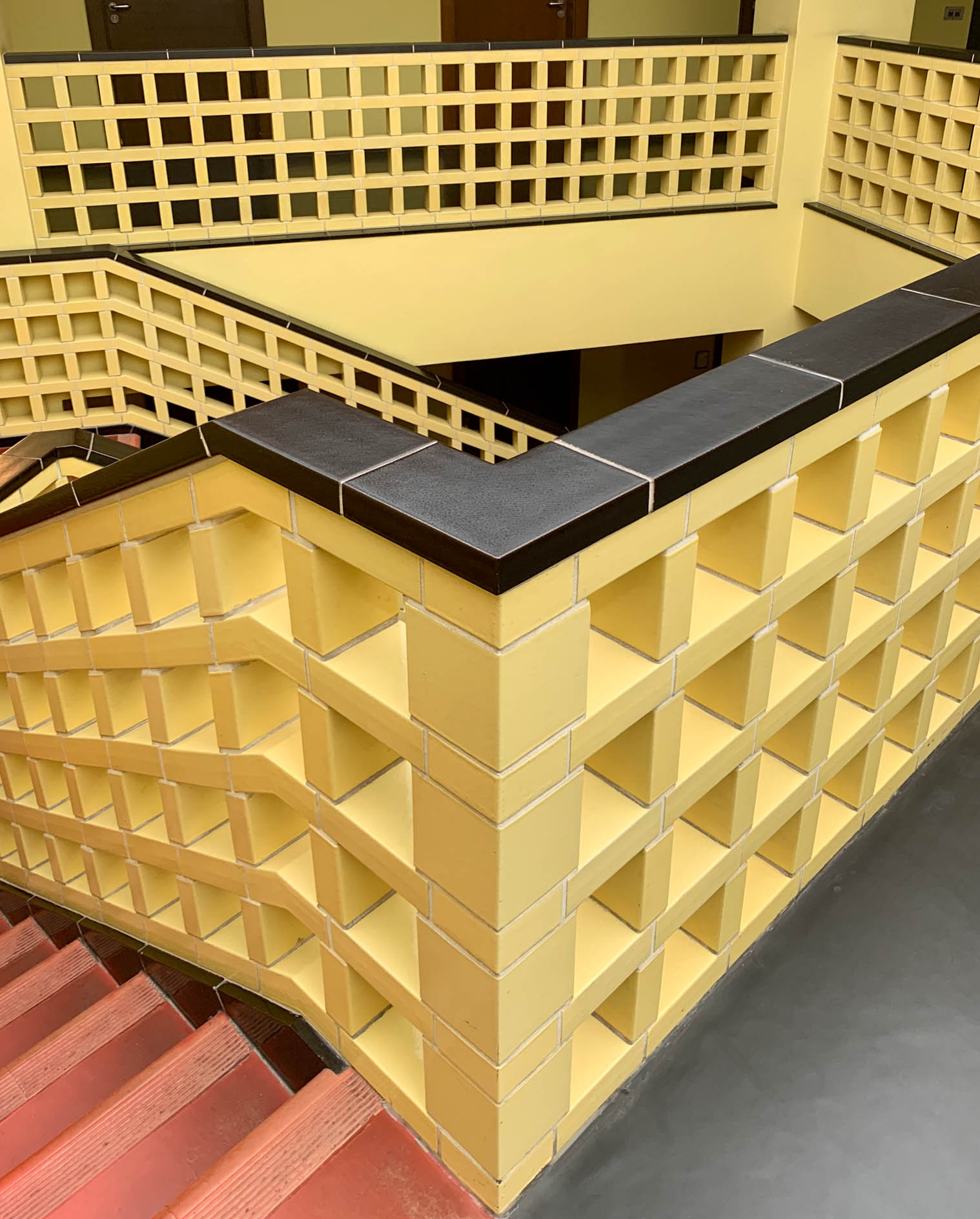
Haus des Rundfunks, 1929-1931. Architect: Hans Poelzig. Photo: Daniela Christmann
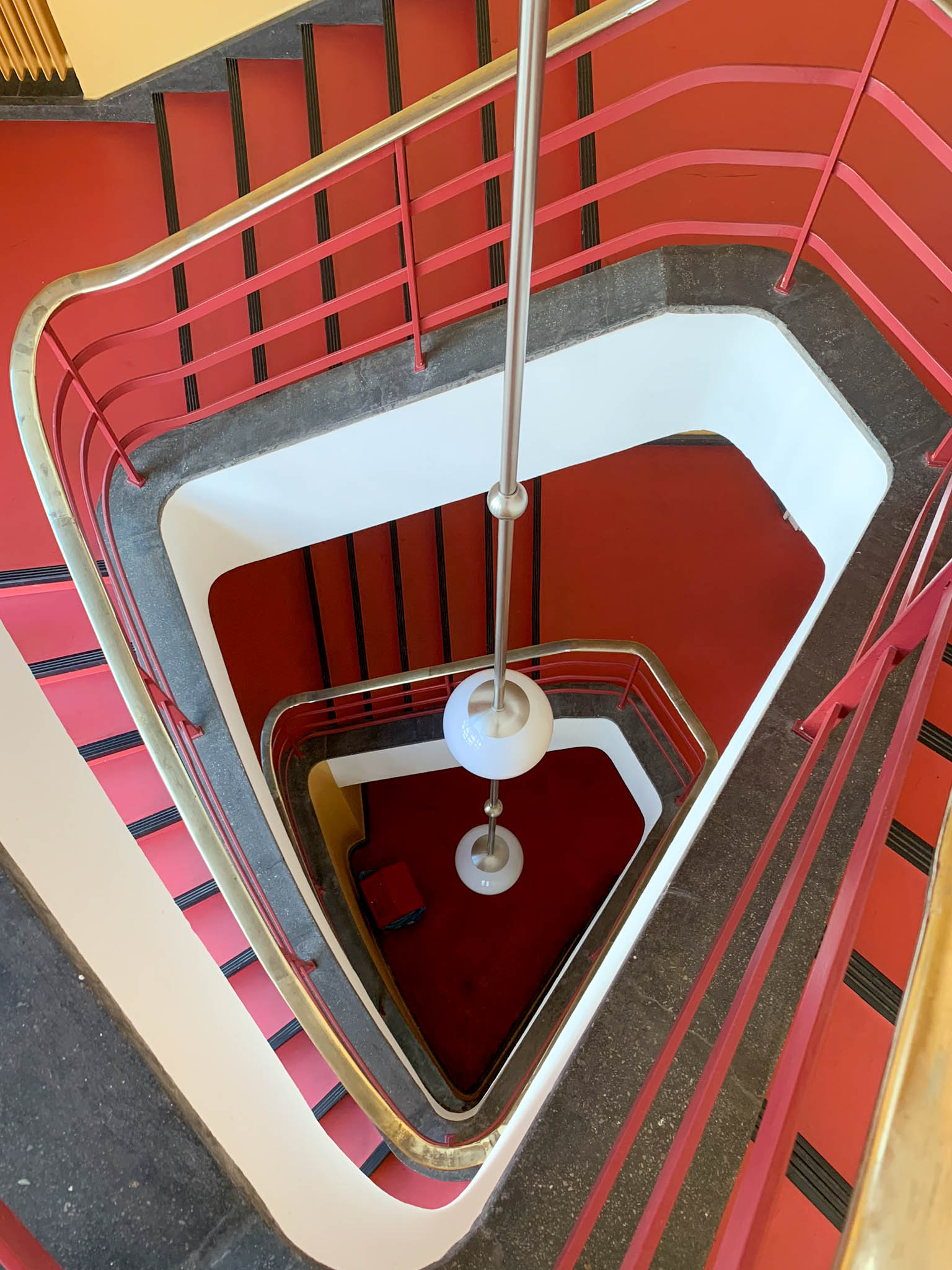
Haus des Rundfunks, 1929-1931. Architect: Hans Poelzig. Photo: Daniela Christmann
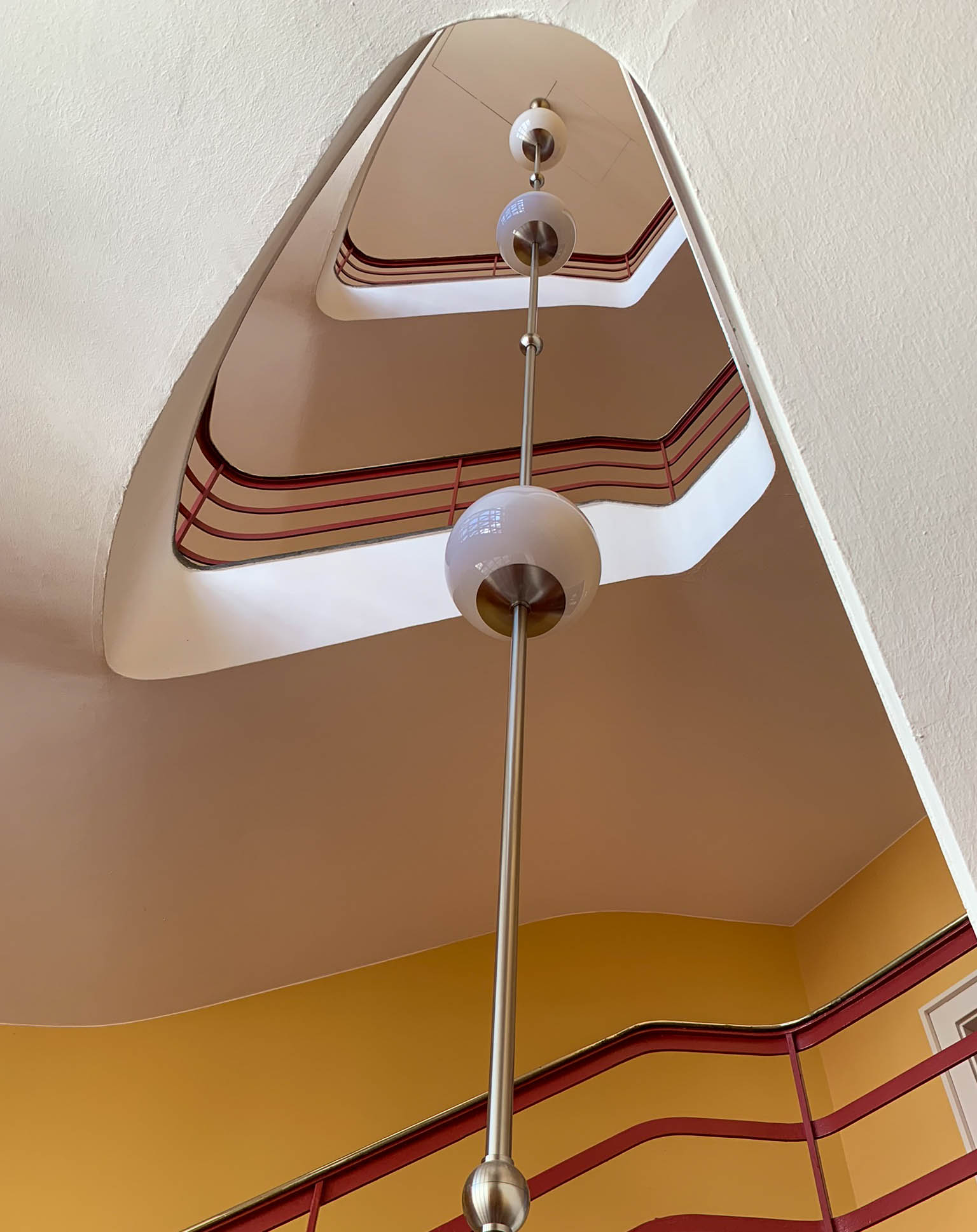
Haus des Rundfunks, 1929-1931. Architect: Hans Poelzig. Photo: Daniela Christmann
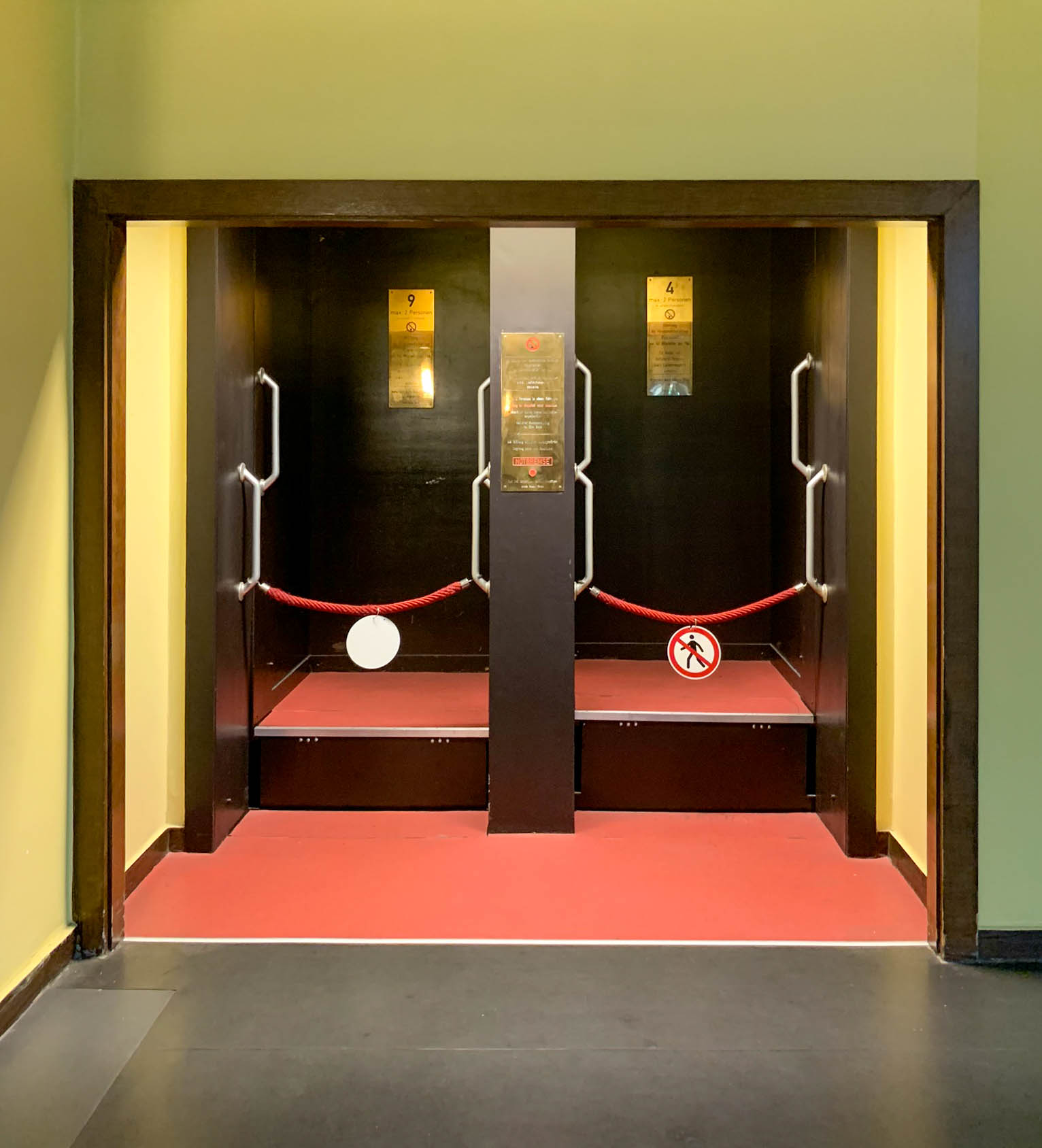
Haus des Rundfunks, 1929-1931. Architect: Hans Poelzig. Photo: Daniela Christmann
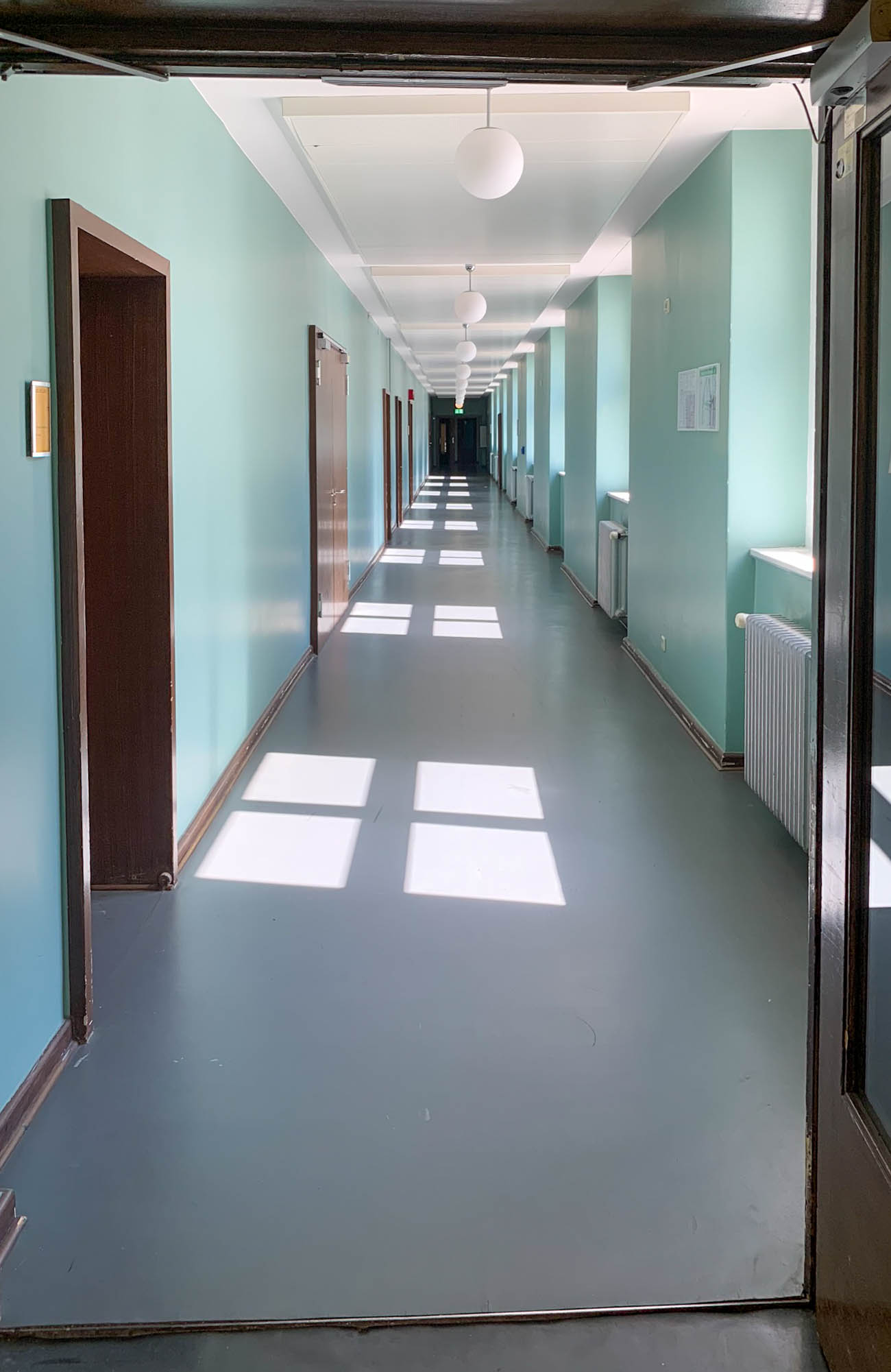
Haus des Rundfunks, 1929-1931. Architect: Hans Poelzig. Photo: Daniela Christmann
The Building during National Socialism and in the Post-War Period
Since the Nazis came to power in January 1933, the Haus des Rundfunks had been producing a Reich program that was broadcast on the regional stations.
As a result, broadcasting could be controlled from Berlin.
Nearly all of the regional stations lost their independence in 1934.
From 1939 to 1945, the Haus des Rundfunks was the headquarters of the so-called Großdeutscher Rundfunk.
On March 22, 1935, the German Television Broadcasting Corporation (DFR) began operations in the Haus des Rundfunks.
In 1945, the Red Army occupied the Haus des Rundfunks, which was almost spared from war damage.
After World War II, the building served Berlin Radio, controlled by the Soviet occupation forces, until 1950.
In 1956, the building was handed over to the Berlin Senate by the Soviet military command.
Although the building was almost unchanged from the outside, the condition inside after the handover was catastrophic.
There was severe damage to the Great Broadcasting Hall and the atrium. The windows, the heating systems, the technical equipment and the water systems were severely affected.
From 1956 to 1957, the first comprehensive renovation took place.
During renovation, the façade was largely restored to its original condition and the building has been listed as a protected monument since 1958.
Reconstruction
It was only in the years between 1986 and 1987 that the interior of the building was reconstructed in accordance with the preservation order and the Great Atrium, the lamps and the corridors were restored to their original design.
From 2010 to 2014, the most recent renovation of the facade took place according to the conservation guidelines. This mainly involved replacing ceramic tiles that had changed color over time or were no longer intact.
Since May 2003, the Haus des Rundfunks has been the headquarters of the Berlin-Brandenburg Broadcasting Corporation.
Public concerts are held regularly in the two broadcasting halls.

